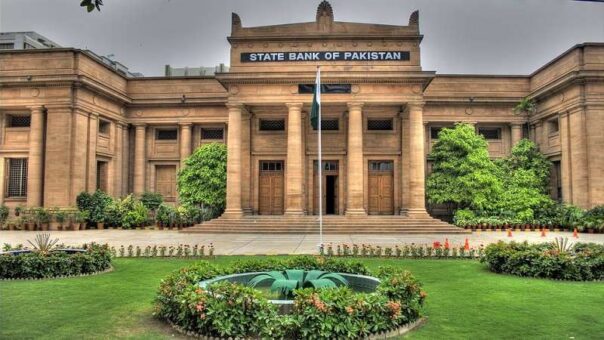Karachi, January 6, 2024 – Recent data released by the State Bank of Pakistan (SBP) indicates a significant shift in Pakistan’s financial landscape, with the country increasingly adopting digital payments and moving away from traditional paper or cash-based transactions.
According to the SBP report, the first quarter of the fiscal year 2023-24 saw a substantial decrease in the currency in circulation, accompanied by a noticeable rise in digital payments. The central bank defined payment instruments as physical or virtual tools that enable individuals to conduct financial transactions, encompassing banknotes, coins, negotiable paper-based instruments, payment cards, digital wallets, and bank accounts.
As of the quarter ended September 2023, the currency in circulation stood at PKR 8,287.8 billion, experiencing a significant decline from PKR 9,148.7 billion in the previous quarter. This notable drop in physical currency combined with the surge in digital payments signifies a clear trend in customer preferences, showcasing a growing inclination towards electronic payment methods over traditional cash-based transactions.
Key elements driving the digitalization of payments and fostering financial inclusion include bank accounts, digital wallets, and payment cards. The SBP report revealed that by June 2023, there were 85.6 million bank accounts, complemented by 111.0 million Branchless Banking Accounts and 2.4 million EMI-issued digital wallets by the end of September 2023.
In Pakistan, two types of digital wallets are prevalent—one issued by Branchless Banking service providers and the other by Electronic Money Institutions (EMIs). As of September 2023, there were 61.3 million Branchless Banking wallets and 2.4 million E-wallets issued by EMIs. The collective issuance of payment cards by Banks, Microfinance Banks (MFBs), Branchless Banking Service Providers, and EMIs reached 54.3 million. Notably, 79% of these cards were debit cards, 17% were social welfare cards, 4% were credit cards, and less than 1% were prepaid cards.
The data underscores the growing role of digital financial services in shaping the country’s payment landscape. The convenience, accessibility, and efficiency offered by digital payment methods have contributed to their increasing popularity among consumers and businesses alike. This trend aligns with global efforts to transition towards a more cashless society, emphasizing the benefits of enhanced security, transparency, and financial inclusion.
As Pakistan continues on this path of digital transformation in the financial sector, regulators, financial institutions, and technology providers are likely to play crucial roles in ensuring the robustness, security, and accessibility of digital payment infrastructure across the country. The SBP remains vigilant, monitoring these developments and working towards creating an environment conducive to the sustainable growth of digital financial services in Pakistan.
